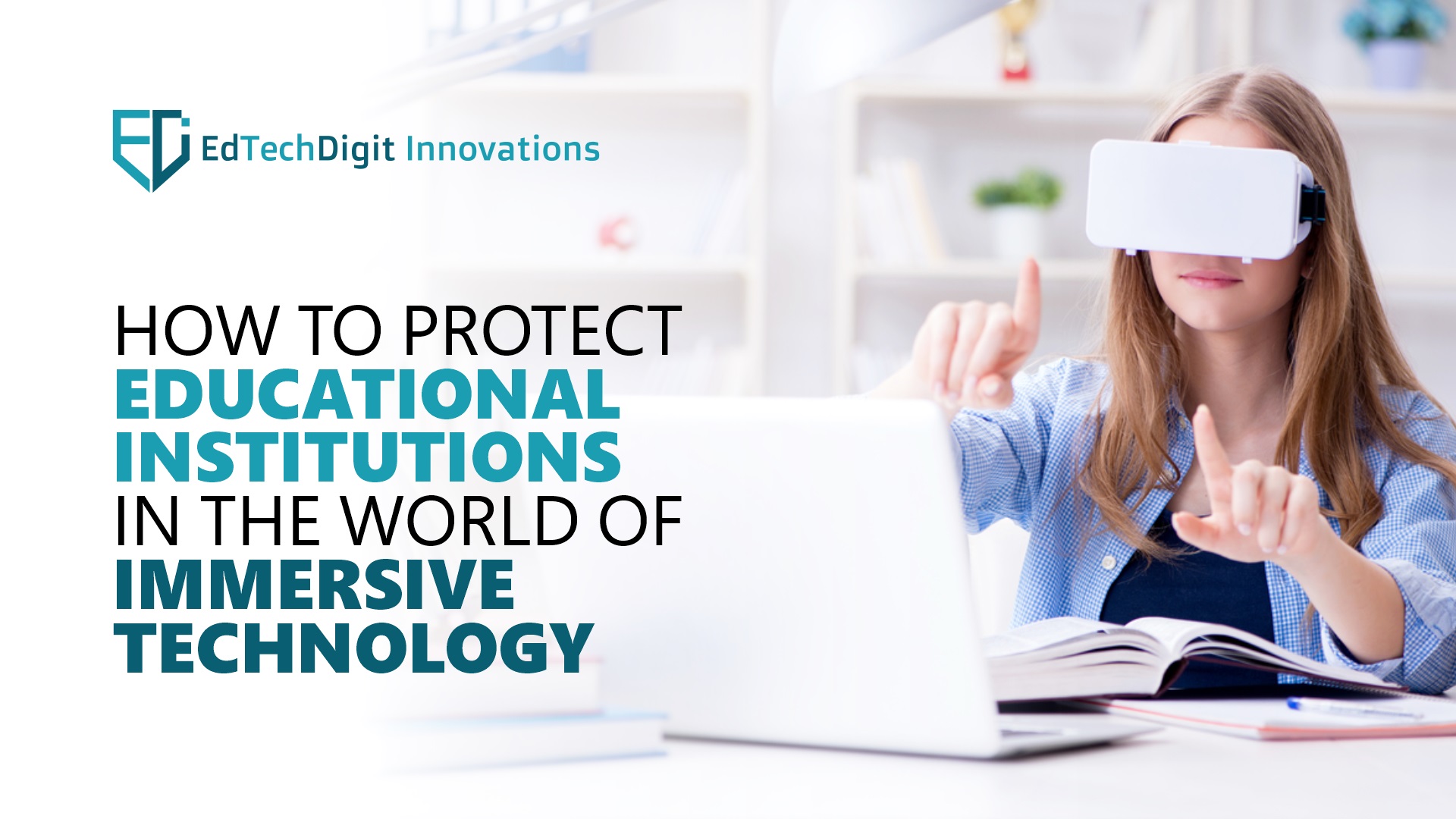Now all the institutes and universities are trying their hands on the latest technological advancements to enhance their students’ learning experience. One of the most popular technologies widely used across institutions is immersive technologies like Augmented Reality (AR) and Virtual Reality (VR).
Though these technologies can significantly enhance the learning experience, they also offer a lot of cybersecurity challenges as well that need proper attention. Schools and colleges are increasingly integrating AR into their various courses, and this educational technology has challenges related to user privacy and confidential data. It can be risky to offer a safe learning environment.
Use of AR and VR in Educational Technology
Now, let us have a quick look at the latest advancements in educational technology, especially the immersive technology that has been transforming students' educational experiences in schools and colleges.
According to Grand View Research, the global immersive learning market was $7.5 billion in 2022 which is expected to grow by 22.2% by 2030.
Augmented and virtual reality offer a high level of visualization allowing students to visualize even complex concepts in an easy-to-understand manner that might be difficult to understand with traditional methods. For example, using this immersive technology, you can easily explore inside a human cell with all the details or navigate through our solar systems.
Then this technology can also be used to create interactive learning experiences by helping students participate in simulations, conduct virtual experiments, or even travel back in time to explore historical events. And it is not surprising that 78% educators believe this AR/VR technology can greatly personalize learning experiences (PwC 2023 report).
AR and VR make learning more engaging and motivating as well. Learning via this immersive technology can be like playing games that can make learning more fun and interactive. Not only that, it helps make education more accessible to students with disabilities. For example, a student with a vision problem can use VR to experience a field trip to the museum.
Challenges of using immersive technology in education
We understood how these immersive technologies are making the learning experience more fun and interactive. But they come with several cybersecurity in education challenges as follows:
- Data breaches
Immersive technologies collect huge amounts of personal data. if there are no proper security measures in place, then this data can be stolen or misused by cybercriminals that can leak such information including personal information and academic records on the dark web.
- Unauthorized access
All the immersive technology devices are constantly connected to the internet and therefore it becomes important for institutions to check that only authorized users can access the sensitive information. A strict access policy should be in place to restrict access by unauthorized users.
- Phishing and social engineering
Educational institutions are the most lucrative target for cyber criminals, and they continuously attack institutions with phishing or social engineering attacks. Students, teachers, and other academic professionals must be therefore well educated about various kinds of phishing tactics and trained to identify and avoid getting trapped.
- Software vulnerabilities
Just like all other software, even AR and VR software can also be vulnerable and can be exploited by hackers. So, institutions must regularly update their software with the latest security patches to minimize the risk of getting hacked or manipulated.
Best Practices to Safeguard Immersive Technology
Here are some ways in which organizations/institutions can protect their immersive technology to leverage it for maximum output. Even cybersecurity professionals have greater role to play in this:
- Regular security audits
Institutes must regularly conduct security audits. It will help them identify if there are any vulnerabilities and resolve them in time. Security audits can include all walks of technology such as hardware, software, devices, networks, systems, etc.
- Data encryption
They must also secure all their sensitive data with high-end encryption technologies. Proper encryption during data storage or transmission ensures they are free from unauthorized access and manipulation.
- Access controls
Institutes must also enforce strict access controls. It will ensure that only authorized personnel can access the information intended. They can also employ multi-factor authentication that provides an additional layer of security.
- Cybersecurity training
It is important to train and educate all the concerned personnel, students, and staff with the right cybersecurity knowledge to identify and avoid becoming victims of new and innovative kinds of cyber threats. They must be trained regarding phishing attacks, malware, reporting suspicious activities and communications, etc.
- Keep the infrastructure up to date
Organizations must also ensure all their hardware and software meet the latest security requirements. They must ensure the software is patched with the latest security versions and they should conduct regular audits to identify and address vulnerabilities promptly.
Conclusion
The latest educational technologies undoubtedly help enhance the learning experience for both students and teachers. It is encouraged to use such latest technologies that will help make learning more fun and interactive. However, institutions must understand the risks associated with using these technologies as discussed in this article and they must take the necessary steps to prevent and mitigate it on time.
By being aware of the latest threats, and taking proactive prevention measures, they can ensure they reap the maximum benefits of these technology without compromising student’s privacy and confidential data.

